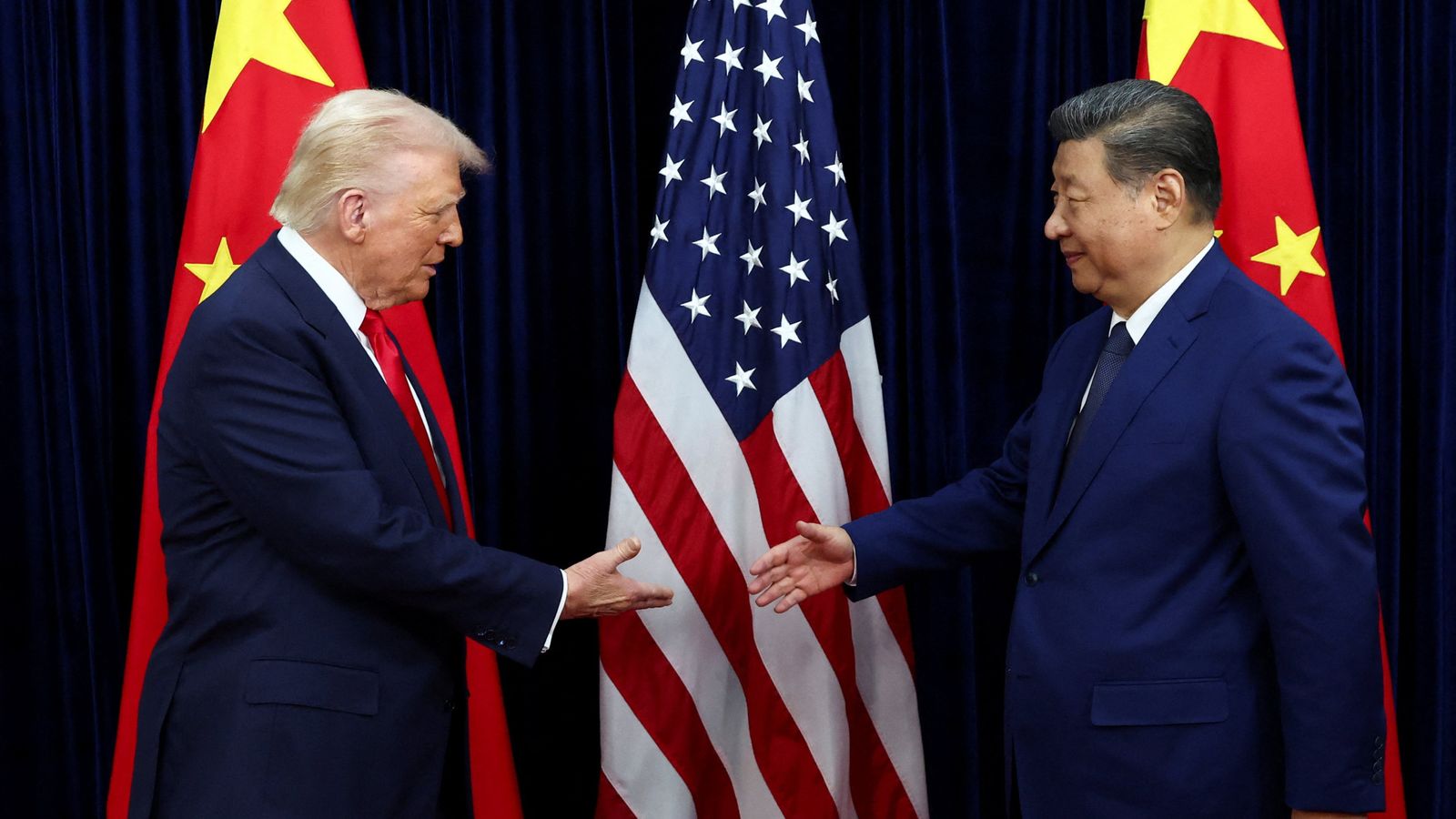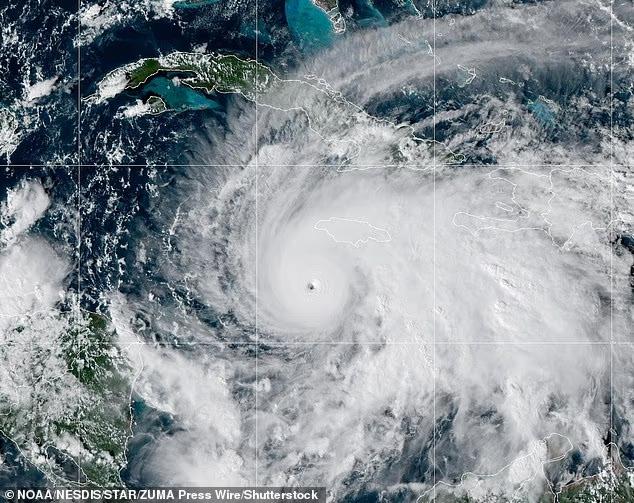For all the brinkmanship, for all the high stakes and attempts to wield maximum leverage, in the end, there was clear recognition from both the US and China that a degree of stabilisation was necessary.
The fact that some progress has been made on a relatively wide range of issues speaks to that.
But there are real questions about how deep that progress runs and how easily, in the hands of two leaders who staked both their reputations on being strong and unyielding, it could all come crashing down.
Follow the latest: Trump teases ‘large-scale’ energy deal
From the very outset, the differences in style could not have been more stark.
As the two posed for the introductory handshake, Donald Trump moved quickly to dominate the space – leaning in, doing all the talking, even quipping to the gathered reporters that Xi Jinping is “a very strong negotiator, and that isn’t good”.
That didn’t raise as much as an eyebrow from the Chinese leader.
Xi doesn’t like or respond well to unscripted moments; Trump, on the other hand, lives for them.
It might seem like a relatively inconsequential detail, but it speaks to how difficult it has been for two such opposing systems to see eye to eye, and how many stumbling blocks remained.
But it seems today, at least some of that was overcome.
Indeed, there appears to have been an agreement on key issues such as the movement of rare earth minerals, the purchase of soybeans, the reduction of tariffs and the crackdown on the trade of fentanyl and the chemicals used to make it.
There was further consensus to keep talking about the sale of high-end US chips and to work together to try to end the war in Ukraine.
None of this is insignificant, but Trump’s assessment of it all as a “12 out of 10” likely brushes over many much thornier issues.
The reality is that there is still a great gulf between them; there are many more barriers to trade than there were at the start of the year, there are still a raft of deep political and structural issues that divide them and the levels of distrust the trade war has left will take more than just one meeting to fix.
Disagreements, such as the future status of Taiwan, for example, weren’t even mentioned today.
There also doesn’t appear to be any guarantees baked in, and thus, there is nothing to prevent either party from reneging on what has been agreed and ramping pressure back up as soon as another issue arises.
And, given the characters involved, that feels all too likely.
Indeed, both sides, for different reasons, have found political advantage in the “maximum pressure” style brinkmanship we’ve seen in recent months.
Read more:
Donald Trump says tariffs will be cut
Everything you need to know about the meeting
Xi in particular cannot now be seen to cave in to Trump’s pressure and, economically at least, China doesn’t need to.
There was an agreement today that the two would meet again in the early part of next year; Trump plans to visit China in April.
This at least offers more diplomatic opportunity, but it would perhaps be naive to assume it will all be plain sailing until then.
By
Source link






Leave a Reply